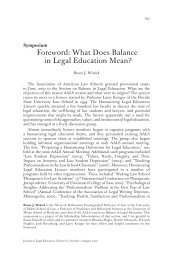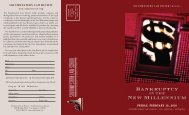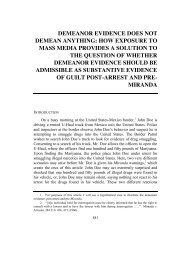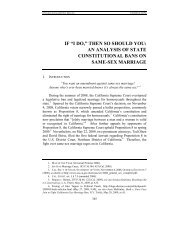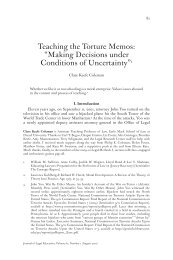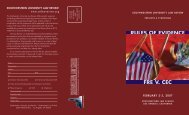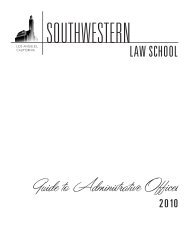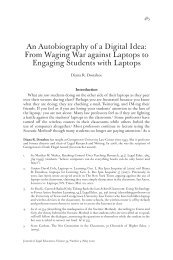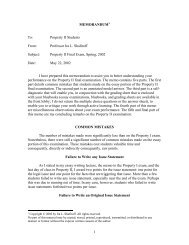What is Art? - Southwestern Law School
What is Art? - Southwestern Law School
What is Art? - Southwestern Law School
- No tags were found...
You also want an ePaper? Increase the reach of your titles
YUMPU automatically turns print PDFs into web optimized ePapers that Google loves.
WHAT IS ART? 143m<strong>is</strong>leading statements’ 121 , when marketing h<strong>is</strong> Star Wars wares, wasconsidered by Lucas’s lawyers to be too forensically problematic forsuch a claim to be pursued—because Ainsworth might have mounteda defence contending that h<strong>is</strong> marketing material stated true factsabout h<strong>is</strong> original involvement with the Star Wars moulds and filmprops.Having chosen to bring suit via the v<strong>is</strong>ual art copyright law route,Lucas and h<strong>is</strong> companies required the UK courts to focus on the intellectualproperty framework of fine art. During those trials, a potentiallyrelevant factor to help courts determine ‘what <strong>is</strong> art?’ does notappear to have been considered: the centuries-old practice of art<strong>is</strong>tsdestroying the means for reproducing their works. Traditionally,sculptors destroy moulds they have made—or comm<strong>is</strong>sioned to bemade—for casting multiple copies of their original sculptures; similarly,art<strong>is</strong>ts of two-dimensional images score through the metal plates theymade—comm<strong>is</strong>sioned their engravers to make—for printing multiplecopies of their original works. In both these ways, art<strong>is</strong>ts were notonly destroying the means of unauthor<strong>is</strong>ed reproduction of theirworks, but also creating a marketplace for their sale of editions oftheir works—signed and/or numbered and/or limited. Accordingly, itmight have been contended that Lucas’s failure to ensure destructionof the Stormtrooper moulds was an additional factor indicating thathe was not an art<strong>is</strong>t making art, but an art<strong>is</strong>an making utilitarianartefacts.EnvoiV<strong>is</strong>ual art<strong>is</strong>ts have made leaps and bounds—over long, and sometimesrelatively short, periods of time—to transcend the forms andpractices of their predecessors. Whether their creations producegood, bad or indifferent works <strong>is</strong> for spectators to assess. Instant orrelatively contemporary assessments often result in hasty and illconsideredverdicts. Longer periods of reflection and debate usuallyproduce mature and better considered critical judgements—as Duchampnoted so well: “Th<strong>is</strong> becomes even more obvious when posteritygives a final verdict and sometimes rehabilitates forgotten art<strong>is</strong>ts.” 122Kubler likew<strong>is</strong>e observes: “Usually the entire range and bearing of [anart<strong>is</strong>t’s] career can be brought into focus only long after death, when121. Id., §43(a).122. Duchamp, supra note 1.




